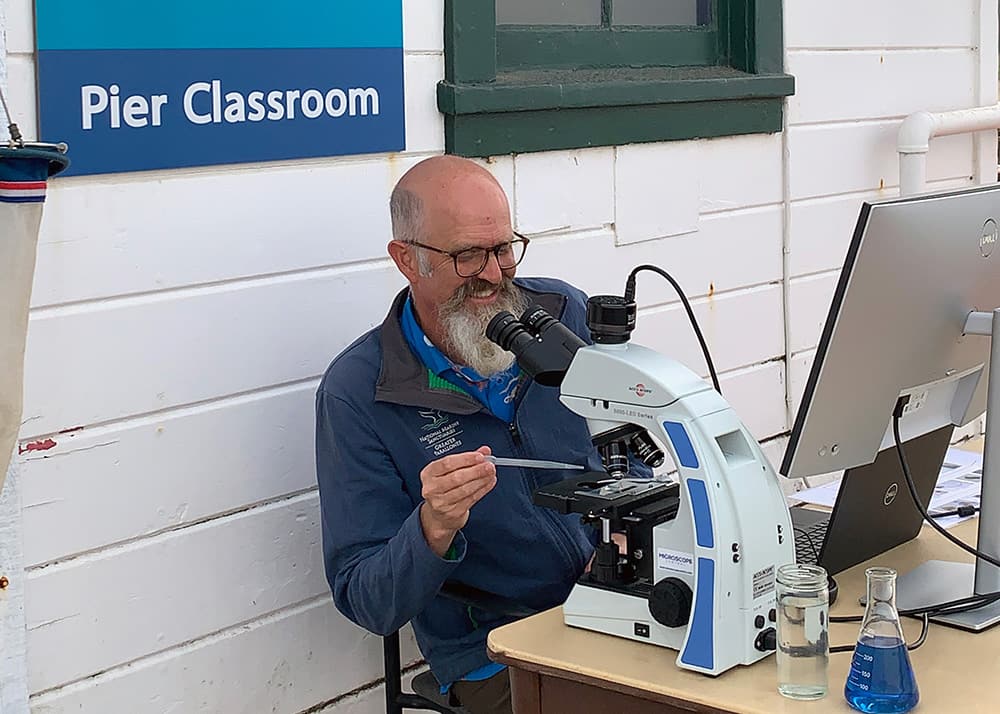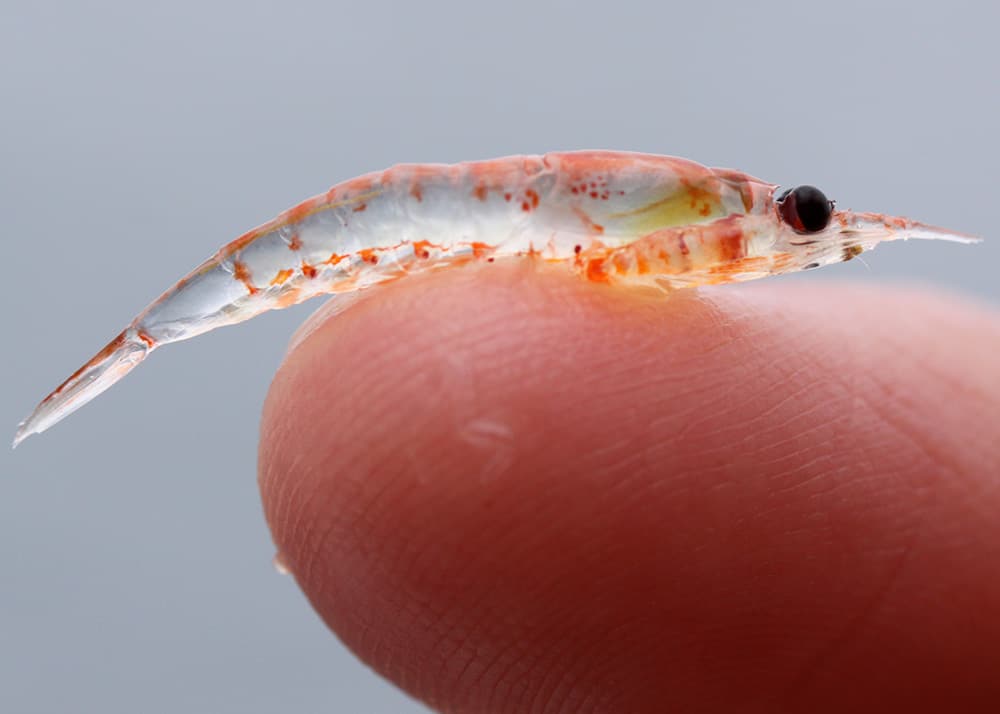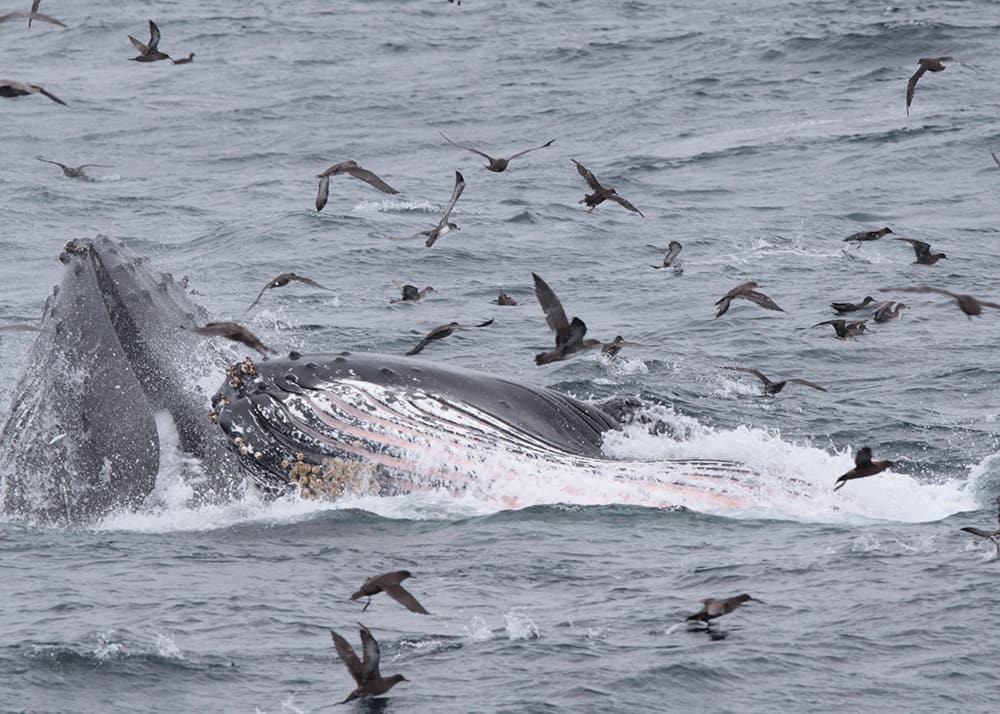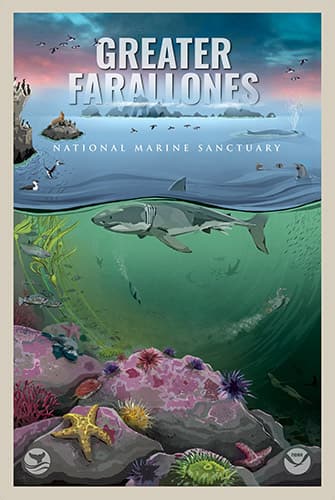October 2022
Students across the nation in all 50 states looked up at their class projector screen this year and witnessed what some describe as “alien-like life decked out in discoware grooving across the dance floor!” They observed shimmery symmetrical diatoms, clear-bodied oozing shapes that morph before your very eyes, and a larval sea star that looks nothing like a star.
“I really enjoyed seeing them (plankton) as living things and not as just still pictures or a hypothetical,” says Brenna Coleman, a senior at Central Campus, Iowa. “It was cool to see that these are, in fact, living creatures."
Justin Holl and Janai Southworth, along with Virtual Student Federal Service UCLA undergraduate intern Julie Quintero, are taking plankton on a "road trip" through cyberspace this year, engaging teachers and students in all 50 states. Holl is the visitor center manager for Greater Farallones and Cordell Bank national marine sanctuaries, and Janai is a plankton specialist and marine educator with the National Marine Sanctuary Foundation. As of October, the team has reached over 1,000 students and led over 50 programs.
“Plankton is completely mesmerizing when seen through a high powered microscope,” Holl says. Plankton drift in the ocean, are often microscopic, and make up the base of the marine food web. Plant-like plankton (phytoplankton) produce 50-80% of the world’s oxygen.
With a 50th anniversary grant in hand, the team set a goal to teach a plankton program in every state in the U.S. to celebrate 50 years of the National Marine Sanctuary System. To accomplish this, they collaborated with NOAA's Teacher at Sea Alumni Network as well as high school science teachers from urban schools. The NOAA Teacher at Sea program places qualified teachers on NOAA ships annually to work alongside scientists. Teachers gain a real world experience and perspective that lives with them in their teaching practice throughout their careers.
“Observing my students being highly engaged with the virtual program on plankton was amazing, especially with all of the virtual classrooms that they have been in the last couple of years, “ says Marine Biology Instructor Dr. Gregory J. Barord at Central Campus in Des Moines Iowa. “The opportunity to continue supporting their marine science interests by connecting with passionate and knowledgeable folks in different parts of the country was awesome! During the program, I felt like a student because I was also so interested in what type of plankton we might see. I cannot wait to do this again!"
While kids have access to a lot of interesting content these days, it's not often a student can watch microscopic life magnified and projected over the internet by plankton experts. The featured plankton was collected from surface waters just off of San Francisco, and shared nationwide as part of the celebration of NOAA’s National Marine Sanctuary System’s 50th anniversary.

“As we celebrate 50 years of national marine sanctuaries, we recognize that today’s youth will determine the next 50 years of ocean conservation,” says Holl. “This program is reaching them now so they can appreciate the importance of life in the ocean, even when it's so small that it’s invisible to the naked eye. We can collect a sample right from our dock in front of our visitor center and office, put a drop of water on a slide and away we go!”
Greater Farallones National Marine Sanctuary is one of four national marine sanctuaries in California. They are located in one of the most productive ocean ecosystems in the world, where plankton seasonally blooms and enriches a vibrant food web from the microscopic phytoplankton to the mighty blue whale that feeds on krill (a planktonic animal, or zooplankton).


Plankton is not immune to experiencing change. Our planet faces changes globally, due to rising carbon dioxide levels and increasing temperatures from burning fossil fuels. Scientists believe phytoplankton numbers have decreased about 40% since 1950.
Research through the NOAA Ocean Acidification program has shown that the waters in the sanctuary and beyond are experiencing seasonal chemical changes, a process known as ocean acidification. The effect on marine life is similar to osteoporosis in human bones, slowing growth and making shells and skeletons weaker. This osteoporosis of the sea is being actively monitored and researched, but could potentially change this region and the global ocean extensively.

The education program titled Ocean Acidification: A Sea of Change introduces the concept of ocean acidification to students by learning about and looking at live plankton, it provides a great springboard to introduce the vulnerabilities of organisms like plankton to ocean acidification. While teaching students across the country about plankton, Holl demonstrated how chemical changes in the ocean affect plankton that have calcium carbonate skeletons, and how this impacts food webs.
Programs like this are critical to inspire future stewards of special places, like national marine sanctuaries and marine national monuments. With virtual education opportunities on the rise, programs like this help increase ocean literacy for those living in places that don’t have a large body of water nearby to visit in person.
As we celebrate the first 50 years of the Office of National Marine Sanctuaries, we hope to inspire the next generation of ocean and Great Lakes conservation leaders through education initiatives like the 50 programs in 50 states program.
“Take a deep breath in and a deep breath out,” said Holl. “Now, take a moment to be grateful for the oxygen that came from the incredible diversity and abundance of phytoplankton in the ocean. That's just one more reason to care about the health of the ocean!”
Jennifer Stock is the education and outreach coordinator/media liaison for Greater Farallones and Cordell Bank national marine sanctuaries.

